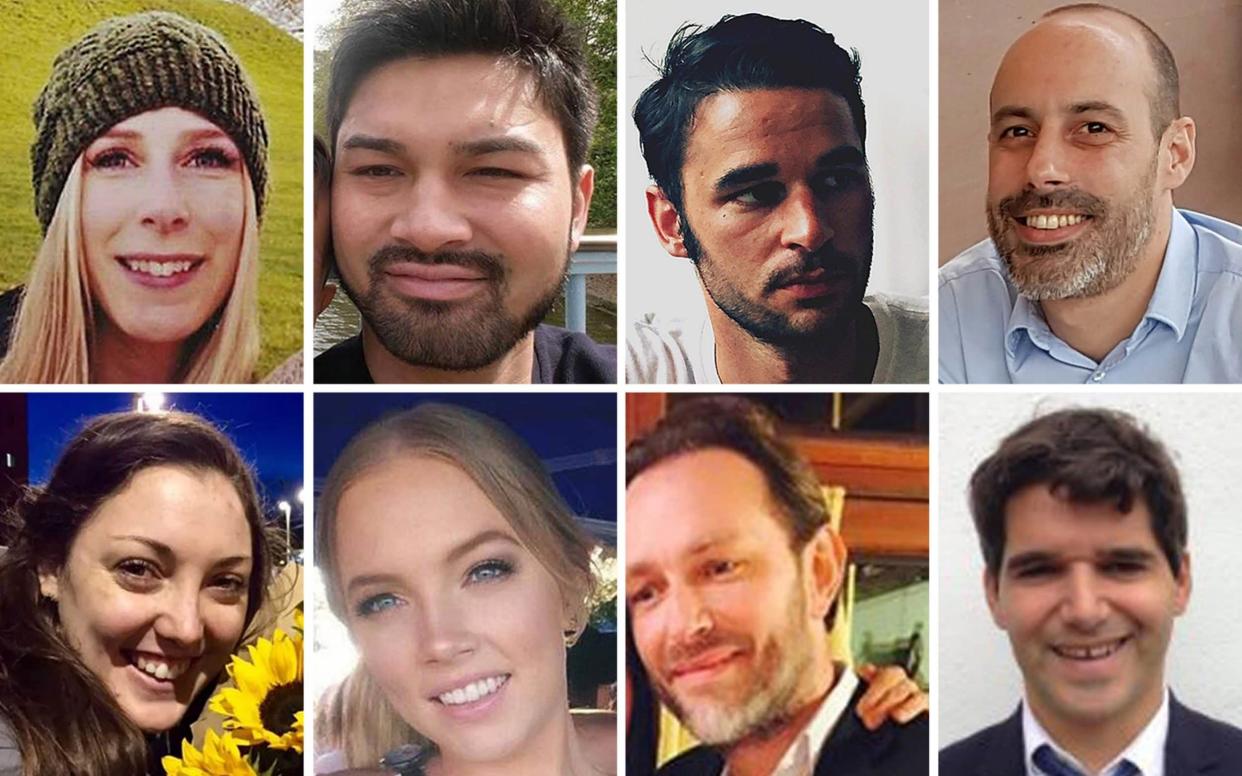London Bridge paramedics waited two hours before treating victims, inquest hears

Paramedics deployed to the London Bridge terror attack waited two hours before attempting to treat some victims amid confusion that more terrorists were on the loose, its inquest has heard.
Paul Woodrow, director of operations for the London Ambulance Service, admitted his staff had communication issues on the night that prevented them from reaching some areas around Borough Market.
He also described how paramedics believed the van used by the knifemen who went on to kill eight people may have been filled with explosives, further hampering their efforts to tend to the wounded.
It comes after victims' families claimed quicker professional medical assistance could have saved lives.
Evidence previously submitted suggested that victims James McMullan and Sebastien Belanger could have survived after they were stabbed around the courtyard of the Boro Bistro restaurant.
Dr Fenella Wrigley, Medical director of the LAS, said that both were in "unsalvageable situations". Five key ambulance personnel were standing nearby, but were held back.
Describing how paramedics faced a "chaotic set of circumstances", Mr Woodrow - who has carried out a review of London Ambulance Service's actions of the night - vowed to ensure his staff learn from their mistakes.
The Old Bailey heard paramedics volunteered to enter the so-called "hot zone" of the attack in Borough Market after midnight - two hours after the stabbing spree began at 10.06pm.
Only firearms officers can be deployed into "hot zones", meaning a team of more than 20 ambulance crews had were ordered to wait at various rendezvous points away from the terror. This is in accordance to the joint policies of London's emergency services.
“An ambulance intervention team could be caught in the crossfire between an assailant and officers in there to try and neutralise that threat,” Mr Woodrow said.

But he said there were "issues around communication" in the aftermath, including a mistaken belief that a terrorist with an assault rifle was still roaming the area.
He said: "It hindered our ability, jointly, to get full situational awareness on that situation."
The service received 134 999 calls by 11pm. Mr Woodrow told the inquest: "There was clearly a breakdown in communication about where the resources were.
"We were overflowing with information that conflicted and we also had information regarding the safety of scenes.
"Trying to get through the volume of information in a timely matter is difficult."
Gareth Patterson QC who was representing the victims' families said this failure meant police officers assumed help was coming so they delayed bringing the casualties to street level.
Mr Woodrow's recommendations to prevent a similar situation in a future attack included "technological upgrades", such as deploying drones for surveying restricted areas and GPS tracking of LAS staff radio handsets.
Khuram Butt, 27, Rachid Redouane, 30, and Youssef Zaghba, 22, killed eight people and injured 48 others in a van and knife attack on June 3 2017.
Xavier Thomas, 45, Christine Archibald, 30, Sara Zelenak, 21, Sebastien Belanger, 36, James McMullan, 32, Kirsty Boden, 28, Alexandre Pigeard, 26, and Ignacio Echeverria, 39, all died.
The inquest continues.

 Yahoo News
Yahoo News 
